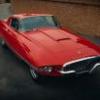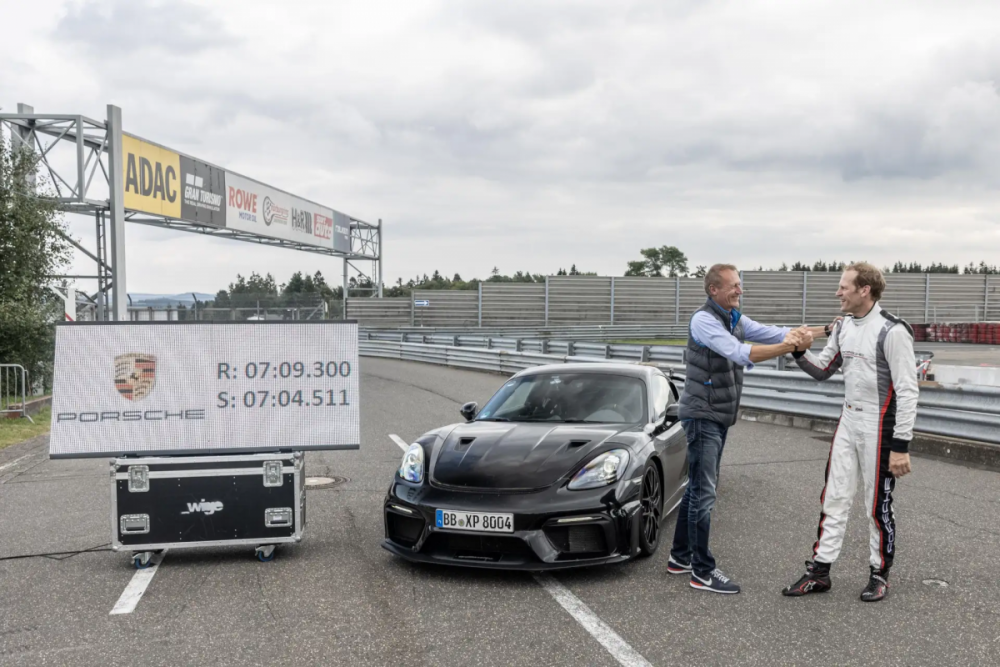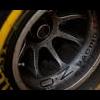Search the Community
Showing results for tags '911'.
-
Source: https://www.motor1.com/news/719326/porsche-911-hybrid-debut-may-28/ A completely new era for the Porsche 911 will begin on May 28. Porsche plans to reveal the first road-going 911 hybrid, pushing the iconic sports car into the modern era. We've seen the 911 hybrid in prototype form for over two years now. Porsche tells us that development is now complete, amassing 3.1 million miles in the process. Some of that mileage comes from the Nürburgring, where Porsche shares a rather tantalizing clue as to what badge the electrified 911 will wear. We're told the hybrid laps the Nordschleife loop in 7 minutes, 16.9 seconds, 8.7 seconds faster than "the corresponding version of the predecessor model." Basic math brings us to 7:25.6, and a quick look through recent Porsche 911 Nurburgring lap times brings us to the 992-generation Carrera S, which turned a 7:25 lap back in 2020. Images shared from Porsche don't reveal badges, but the lack of bonkers bodywork points to something on the milder side. A Carrera S with a hybrid powertrain certainly fits that bill. “For the first time in our icon’s 61-year history, we are installing a hybrid drive system in a roadgoing 911," said Frank Moser, Porsche vice president for the 911 and 718. "This innovative performance hybrid makes the 911 even more dynamic. We left nothing to chance during development and tested the new 911 under all sorts of conditions all over the world from the freezing cold to scorching heat, as was the case during the final stages of testing in Dubai." Details of the hybrid powertrain are as yet unknown. Porsche tells us it's aimed at performance, not efficiency, and we were previously told it won't be a plug-in hybrid. With a 'Ring time of 7:16, is should be plenty fast without losing its capability to carve corners. All will be revealed on May 28. Be sure to check back in 18 days time, we'll have everything you need to know.
-
Source: https://www.motor1.com/news/712023/porsche-911-hybrid-confirmed-summer-debut/ Porsche's Annual and Sustainability Report for 2023 is out, all 239 pages of it. The most important detail mentioned in the lengthy document is news about the 911 hybrid. We get to see the electrified sports car early this summer with a six-cylinder engine. It's touted as an "ultra-sporty hybrid" and promises to make the iconic sports car "even faster and more efficient." The partially electrified model will be a new member of a revamped 911 lineup, likely known internally by its "992.2" codename. Interestingly, Porsche hints there will be more than just one version with a hybrid setup, saying the hardware will be used in "selected derivatives of the 911 model line." Porsche doesn't go into any details about the 911 Hybrid, although it does say the newly developed powertrain takes after the firm's racing division. Presumably, lessons learned from the 919 and 963 programs have helped the road car division engineer an electrified 911 to meet increasingly stringent emissions regulations. About a year ago, CEO Oliver Blume said the new car wouldn't be a plug-in hybrid, so no charging port. Separately, Frank Moser, Vice President of 911 and 718 model lines mentioned last year the hybrid model "should not get too heavy," which would explain the non-PHEV route. A plug-in hybrid would've required a bigger battery pack, adding weight and complexity while creating packaging issues. According to sources close to Porsche, the 911 Hybrid will reportedly have a 48V starter motor built into the dual-clutch automatic gearbox. The umpteenth variant of the 911 is said to have an electric motor powering the front wheels while the combustion engine is going to drive the rear axle. Consequently, it'll have all-wheel drive. The e-motor is expected to get its juice from a small, lightweight lithium-ion battery pack developed specifically for this application and mounted behind the rear seats. The weight penalty is unlikely to exceed 220 pounds compared to an equivalent version that doesn't have the extra hybrid bits. The juiciest rumor surrounding the 911 Hybrid is the possibility of an electrified GT2 RS with a mild-hybrid setup. The combined output from the electric motor and a twin-turbo 3.8-liter flat-six is expected to surpass 700 horsepower. The torque figure is unknown, but rumor has it that a "significant increase" is planned over the 911 Turbo S' 590 pound-feet. A weight distribution of 39:61 front/rear is mooted. The crown jewel of the 992 family is apparently scheduled to come out in 2026. A fully electric 911 isn’t happening this generation since Porsche has said an EV won’t be released this decade. The goal is to keep selling 911s with combustion engines for as long as possible, even if that means switching to synthetic fuel to meet stricter regulations. Porsche has been producing nearly carbon-neutral eFuel since late 2022 at its factory in Chile. It's worth noting the European Union has already agreed to exempt synthetic fuels from the 2035 ban on new cars that generate harmful emissions. It could mean the 911's days with combustion engines are not numbered after all.
-
https://www.thedrive.com/news/42806/new-porsche-718-cayman-gt4-rs-laps-nurburgring-quicker-than-last-911-gt3 "New Porsche 718 Cayman GT4 RS Laps Nurburgring Quicker Than Last 911 GT3 The Cayman line is set to get a new halo model with devastating performance. The 718 Cayman GT4 is a highly competent vehicle, but as it turns out, the platform is capable of even more. Enter the Porsche 718 Cayman GT4 RS. In the development of this new beast, Porsche did what every good German automaker does, and took it to the Nürburgring. Results were impressive, as you see in the official lap video. With Porsche development driver Jörg Bergmeister behind the wheel, the GT4 RS laid down a 7:09.3 laptime around the 20.832-kilometer Nürburgring-Nordschleife circuit, while posting a 7:04.511 lap on the 20.6 km layout. The latter is a full 23.6 seconds quicker than the existing Cayman GT4, making it clear that the RS is no minor upgrade. The laptimes were set with a production model vehicle, though equipped with a racing seat for driver safety. A set of sticky Michelin Pilot Sport Cup 2 R tires were used, which are an available option for the car. Andreas Preuninger and Jörg Bergmeister celebrate after setting a rapid laptime in the Porsche Cayman GT4 RS. It's a rapid laptime for a car that isn't even top of the Porsche range. It compares well with the 6:43.3 second time set on the 20.8 km course by the 911 GT2. It should also let owners walk away from the Tesla Model S Plaid on a single lap, let alone during sustained running. Perhaps most notably, though, it bests the time set by the old 911 GT3, which lapped the course in 7:12.7 back in 2017. "During development, we gave the 718 Cayman GT4 RS everything that characterises a genuine RS: lightweight construction, more downforce, more power and, of course, an even higher level of responsiveness and feedback to driver inputs," said Andreas Preuninger, who holds the title of Director GT Model Line at Porsche. Preuninger also noted the value of testing at the Nürburgring, adding that "The fantastic lap time of the Nordschleife is impressive proof of how clearly noticeable these improvements in driving dynamics are." Porsche hasn't yet revealed the exact specifications of the GT4 RS. However, based on Preuninger's statements, expect more than the 414 horsepower and 317 lb-ft of torque of the GT4, and a curb weight a little less than 3295 lbs. Speculation in the car world is rife, with expectations the GT4 RS could boast up to 500 horsepower. These figures are backed up by little hard information, however, so should be taken with a grain of salt. Meanwhile, the obvious aero mods on the GT4 RS should help with sticking the car to the track in high-speed cornering. Bergmeister refers to the car as an "uncompromising driving machine," noting that "it feels as nimble as a go-kart on mountain roads, yet is impressively stable and well-balanced on the racetrack." We'd certainly love to take a go-kart out on the Tail of the Dragon, but it likely wouldn't be anywhere as near quick as the GT4 RS. Bergmeister's opinion carries some weight, but not only due to his fast laptimes. As a development driver, he spent over 500 hours behind the wheel during the car's development. The GT4 RS will be fully revealed at its world premier in November, but for now, marvel at the hot tour of Germany's most famous racing circuit. The first Cayman to bear the RS moniker seems like it will live up to the badge."
- 15 replies
-
- 4
-

-
https://carsnkopi.wordpress.com/2023/02/23/porsche-legends-911-sport-classic-pops-into-town/ What has a tricked-out twin-turbo 3.7-litre flat-six, rear-wheel drive, a 7-speed manual tranny, 543 horses, 600 newtons of torques, is one of Porsche’s Heritage Design limited-run models with only 1,250 units to go around the World and requires you to come up with 1.5 million reasons to want one? Well, you’d probably already guessed it seeing the headlining picture. Yes! The (997.2) 911 Sport Classic has finally “popped” into town for the 2nd iteration of Curvistan. Curated once again by Stefan Bogner, the man behind Curves Magazine. Who, very clearly showing he is one of us, happily stepped outside to check out a non-Porsche (gasp!) and to chat about cars before very quickly slipping back in to continue his official duties. With 4 units of this very special 911 allocated for our sunny island, one lucky owner had this particular unit already registered, narrowly sidestepping a massive slap of tax increases that has only just come into effect. | Just in case you were wondering, taking a look at it is free, so for those of us without the requisite 1.5 million to spare, you’re in luck! Just try not to drool over the bodywork since it’s already spoken for. No, we won’t get to drive it. Ever. Lucky bugger. Opening hours for Curvistan@Mandala Club is as follows: Tue – Sat | 10am – 10pm, Sun | 10am- 6pm Mandala Club 31 Bukit Pasoh Rd Singapore 089845
-
Coupé or Cabriolet? Targa: The Best of Both Worlds Porsche completes its sports car trio in time for summer: following on from the Coupé and Cabriolet, the third body variant of the new 911 generation now makes its debut with the all-wheel drive Porsche 911 Targa 4 and 911 Targa 4S models. The distinguishing feature of the Targa remains its innovative, fully automatic roof system and, just like the legendary original Targa model from 1965, it features a characteristic wide roll hoop, a movable roof section above the front seats and a wraparound rear window. The roof can be comfortably opened and closed in just 19 seconds. It is powered by a six-cylinder, three-litre boxer engine with twin turbochargers: the Porsche 911 Targa 4 now delivers 283 kW (385 PS) and, in combination with the optional Sport Chrono package, accelerates from zero to 100 km/h in just 4.2 seconds - one tenth faster than before. The engine in the 911 Targa 4S boasts 331 kW (450 PS) and reaches the 100 km/h mark in just 3.6 seconds under the same conditions - four tenths faster than its predecessor. Top speed of the 911 Targa 4 is 289 km/h (up two km/h), while the 4S peaks at 304 km/h (up three km/h). Both sports cars are fitted with eight-speed dual-clutch transmission (PDK) and intelligent all-wheel drive Porsche Traction Management (PTM) as standard to deliver maximum driving pleasure. Alternatively, the 911 Targa 4S can be ordered with the newly developed seven-speed manual gearbox, with which the Sport Chrono package is included. New technology has also been integrated to extend the range of features for both 911 models and, for the first time, Porsche InnoDrive, which includes adaptive cruise control, is available. Thanks to the enhanced Smartlift function, ground clearance can be programmed so that it is raised for everyday use. The list of options is supplemented by an extensive range from Porsche Tequipment and new personalisation options from Porsche Exclusive Manufaktur. Porsche will further extend the combination of traditional style elements, timeless design and cutting-edge technology in a special edition of the 911 Targa, which will make its debut in June. Efficient biturbo boxer engine Like the 911 Carrera models, both Porsche 911 Targa variants profit from the increase in power provided by the turbocharged three-litre six-cylinder boxer engines. Both performance and everyday usability benefit as a result. The engine in the 911 Targa 4 produces 283 kW (385 PS) at 6,500 rpm, which is 11 kW (15 PS) more than its predecessor. Maximum torque of 450 newton metres is delivered across a wide engine speed range of between 1,950 and 5,000 rpm. With 331 kW (450 PS), the 911 Targa 4S delivers 22 kW (30 PS) more output than its predecessor and generates maximum torque of 530 Nm (up 30 Nm) between 2,300 and 5,000 rpm. Optimised all-wheel drive for better traction The enhanced performance of the new all-wheel drive models goes hand-in-hand with further development of the front-axle drive. The clutch and differential unit is water-cooled and has reinforced clutch discs for greater robustness and a higher load capacity. The increased actuating torque at the clutch improves its adjustment accuracy and the function of the additional front-axle drive. Overall, the enhanced front-axle drive with PTM (Porsche Traction Management) contributes to even better traction in all road conditions. Further developed chassis for more comfort and safety The electronically controlled variable damping system PASM (Porsche Active Suspension Management) is part of the standard equipment on the new 911 Targa models. This system automatically adjusts the damping characteristics in terms of driving comfort and handling to each driving situation and has two manually adjustable maps, Normal and Sport. Porsche Torque Vectoring Plus (PTV Plus), which includes an electronic rear differential lock with fully variable torque distribution, is added as standard equipment for the Targa 4S and is available as an option on the Targa 4. Like the other eighth generation Porsche 911 variants, the Targa models are also equipped with Porsche Wet mode as standard. Sensors fitted in the front wheel housings are capable of detecting water on the road surface and, if significant volumes of water are picked up, a signal in the cockpit provides a recommendation for the driver to manually switch to Wet mode. The drive responsiveness is then adapted to the conditions to guarantee maximum driving stability. The driving dynamics setup for the 911 Targa 4 includes 235/40 ZR tyres on 19-inch alloy wheels on the front axle and 295/35 ZR tyres on 20-inch wheels on the rear axle. As standard, the 4S model is fitted with 245/35 ZR tyres on its 20-inch front wheels and 305/30 ZR tyres on its 21-inch rears. On the Targa 4, deceleration is taken care of on both axles by 330-millimetre brake discs with black four-piston monobloc fixed callipers. The red-painted brake callipers on the Targa 4S have six pistons at the front axle, four at the rear while its discs measure 350 mm front and rear. The Porsche Ceramic Composite Brake (PCCB) can be ordered as an option. Extravagant Targa design with a modern interpretation The exterior of the Porsche 911 Targa is characterised by the design elements of its 992 model generation. Compared to its predecessors, its body features significantly more pronounced wheel housings at the front and, between its LED headlights, its bonnet has a distinctive recess evoking the design of the first 911 generations. Its rear is dominated by its wider, variably extending rear spoiler and seamlessly integrated, elegant light bar. With the exception of the front and rear sections, the entire outer skin is made from aluminium. The interior echoes the 911 Carrera models and is characterised by the clear and straight lines of its dashboard and its recessed instruments. The 911 models from the 1970s provided the inspiration here. Alongside the central rev counter - very much a defining feature for Porsche - two thin, frameless freeform displays extend the information provided to the driver. A compact switch unit with five buttons for direct access to important vehicle functions is located below the 10.9-inch centre screen of the Porsche Communication Management (PCM). The standard PCM features include online navigation based on swarm data as well as Connect Plus with Apple Car Play. The model for a new class of sports cars since 1965 The 1965 911 Targa 2.0 was a trailblazer for a whole new type of car. Originally marketed as a "safety cabriolet with anti-roll bar", the Targa, with its detachable roof, soon established itself as an independent concept and indeed became a style icon. Right through to the present day, Porsche has continued to combine two worlds in the 911 Targa: the advantages of open-top driving in a cabriolet combined with the everyday comfort and safety of a coupé. Prices The new Porsche 911 Targa models will be launched on the market from August 2020. Prices (including 19 percent VAT and country-specific equipment) start from 128,486 euros for the 911 Targa 4 and from 143,956 euros for the 911 Targa 4S.
- 30 replies
-
- 11
-

-
Singapore drivers have earned themselves a bad reputation in Malaysia after a certain someone made headlines for a road rage incident that occurred at Tuas Second Link. Since then, many have began keeping a watchful eye on Singapore-registered cars and the way Singapore drivers behave on foreign soil. Unfortunately, a Singapore Porsche convoy in Malaysia caught the attention of a local driver who filmed them driving "recklessly" and subsequently made a police report on them. Watch the video here: What Happened? A group of Singapore-registered Porsches were travelling on a single-lane road in Malaysia, intending to drive in a "convoy style" configuration. To maintain their convoy configuration, several Porsches overtook the cam car driver, who was in the middle of the Porsche convoy. The cam car driver deemed the overtaking manoeuvre by the Porsche drivers to be "reckless". So unsurprisingly, the Malaysian driver used his mobile phone to film the overtaking incident while driving and subsequently made a police report about them. In all honesty, I felt the overtaking manoeuvres by the Porsche drivers were not reckless at all (despite a few of them crossing the double solid white lines). Here's why: 1) They ensured that the traffic in the opposite direction was clear before performing the overtaking manoeuvre; and 2) They performed the overtaking manoeuvre swiftly yet safely, which did not cause the cam car to perform any abrupt braking. Wanted by Malaysian Authorities Malaysian authorities are now attempting to track down the 7 Porsche drivers involved in the "reckless" incident. Below is the original media statement by the Kota Tinggi District Police Chief, Johor: Here's the translated version of the media statement: Netizens' Comments Cam car driver obviously forgot to "ownself check ownself". My exact sentiments. After the stolen Honda Civic Type R incident and the Hyundai Elantra, whose wheels got stolen in KSL City Mall, it is not uncommon for more Singaporeans to take additional precautions while travelling in Malaysia. ========= Be the first to get the latest road/ COE news, and get first dibs on exclusive promos and giveaways in our Telegram SGCM Community. Join us today!
-
Dedicated F1 fans here might know there's a Netflix series based on it called "Drive to Survive". I haven't watched a full episode of it — since the current 2021 season rivalry between Verstappen and Hamilton is more than enough drama for me — but I'm aware of its great production quality. If you're into that kind of stuff, I highly recommend this free series on Porsche's official YouTube channel called "Michael Fassbender: Road to Le Mans": It's based on Pro-Am driver Michael Fassbender's journey through the European Le Mans Series (ELMS), in his quest to eventually compete at the 24 Hours of Le Mans in the World Endurance Championship (WEC). If you find his name familiar, that's probably because he has starred in the movies you've watched, most notably as Magneto in the X-Men series: Maybe he can make use of his mental powers to force opponents off the track to secure his wins? The 3rd season just started this month, and each episode averages about 20 minutes. The 1st season had 6 episodes and the 2nd season expanded it to 9, but you can easily binge the whole thing over a weekend, which I highly recommend if you want to understand the full context behind his struggles. To watch them all, just click on the red bolded text within this paragraph for each respective season's playlist. As mentioned, this whole series is entirely FREE, so don't say I never jio you all when I got lobang ah! In the meantime, enjoy the first episode of this latest season:
-

Carwow pits new Porsche 911 against its rivals in a drag race
chitchatboy posted a blog entry in MyAutoBlog
The new Porsche 911 has arrived and British YouTube channel, Carwow has managed to gather the new 992 and its rivals together for a drag race. As per most of its races that it does, the cars will go through a quarter mile race, followed by a rolling race and a braking test from 112km/h. With a zero to hundred sprint time of 3.4 seconds for the new Porsche, the near entry-level 911 Carrera 4S is no slouch. Despite having only 443bhp vs its much more powerful rivals like the 611bhp Audi R8 Performance, the race is closer than you think. Watch how well the Porsche did in the video below! -
Hi All, had a friendly debate with a fellow petrol head. I was for turbo S being a super car. He was against . My argument was turbo S has 580hp and is probably the fastest accelerating car, minus the tesla. His argument was turbo S doesn't evoke the emotions like a lambo or ferrari. So my question is what make a car a supercar? Price, history, horespower, looks? what about aston, mclaren and bentley?
- 45 replies
-
- 1
-

-

Someone managed to fit a manual gearbox into a 911 GT3 RS
chitchatboy posted a blog entry in MyAutoBlog
Porsche offered its 911 GT3 RS without a manual gearbox due cost and marketing reasons but it didn't stop a owner from converting his car from the standard fit dual-clutch gearbox to a manual gearbox. As seen from the Rennlist forum via Carscoops, a Porsche purist and collector recently decided to take matters into his own hands and fitted a six-speed manual from the 911R to his GT3 RS. With nearly 1,500km on his car, he enlisted the help from BGB Motorsports and for the next seven to eight months, everything was planned and ready for the transplant. Together, they bought a 911R transmission from Suncoast Porsche Parts after it was added to the Porsche parts catalog. It cost around S$30k and was successful slotted in the RS a few weeks ago. While the car might not be as fast around the track as the factory model, we are sure the owner will have more fun driving his car hard. -
We all know Porsche's new 991 GT3 is a pretty fast car considering that it has 475bhp and can do more than 300km/h if the roads allow so. So, this guy in his Nissan comes up to GT3 and tries to out drag it with his 350Z. Of course the 350Z has to be tuned in order to even stand a chance. According to the video, it is equipped with a supercharger that would increases output to at least 420bhp. Then, all of a sudden, something else comes up from behind and surprises them at an estimated 240km/h. Watch the video and find out what happens... https://www.youtube.com/watch?v=1Dq2lh51G_c
- 4 comments
-
- volkswagen
- golf
-
(and 7 more)
Tagged with:
-
http://www.youtube.com/watch?v=XAId3vqwqvc The Nissan GTR is commonly known as the 'King of drag race' with its potent off-the-line performance. Credits to its clever all-wheel drive system, the GTR can effectively put down its 545bhp and 630Nm of torque on the drag strip. Recently, however, British publication EVO took out the GTR and pit it against Porsche's new 911 Turbo - and found otherwise. In comparison, the 991 gen Turbo has 520 horses - 25 fewer than the GTR. But it weighs 1,665kg - compared to the GTR's 1,746kg. That could have given it a slight advantage.
-
Damn, this is rare. Esp if it really isn't a bodykit. http://www.sgcarmart.com/used_cars/info.php?ID=436557&DL=1000 Sorely tempting.
-
There's a unique new way for Porsche owners, male and female, to give their car its own special identity. Where the model type normally goes, you can now opt to have the wording of your choice in the same style of lettering. Normally, instead of the model names such as Cayenne, Turbo, Carrera, Cayman or Boxster, the name of any owner, his or her girlfriend or boyfriend, dog, company or anything at all can be put on the car: from Bruce to Michelle, from David to Roxanne to Jade and so on. Furthermore, creative thinking can lead to all sorts of amusing phrases, with endless possibilities. Phrases like: 'My Seventh' or 'Thanks Daddy' 'Not Leased' and 'Follow Me' are just some examples. With its own unique wording, a Porsche becomes just a little more exclusive and that's what this unique new service is all about. The lettering can also be ordered in different colors - black, silver, and even gold - at www.nameyourporsche.com, where you'll also find a range of examples and full information about quality, price, and delivery all over the world.
-
http://dai.ly/x151mnc Motorsports crash scenes are one of the most popular. While we are no sadists, these scenes usually add that bit of extra spice and drama to the sports. But of course, some are more spectacular than others. Let's start by saying even by rally crash standard, this is terrifying. All we can tell is that the driver locked up his brakes, failed to negotiate a turn, went straight into the barrier - and the rest is history. Fortunately, both the driver and co-driver are unhurt from the accident.
-
How long is needed before an icon can be created? Many of us don't hold the answer - but Porsche does. Half a century of the 911 has seen it become one of the benchmarks - not just in its segment, but in the automotive industry. 50 years and seven generations - few models can claim a life as long-lived as the 911. That said, the 911's recipe has raised brows since its inception. Its engine is at the wrong end of the car. The looks? Many argue that it has hardly changed at all. But for Porschephiles - it is the timeless looks that, perhaps, hold the greatest appeal of all. It all started in 1963, when Ferdinand Alexander Porsche 'Butzi' penned the 911 to take over the 356. The second generation came in 1973 - almost a decade after the first 911's debut. It is also this generation that spawned the famous 'Turbo' variant, which was launched in 1976 - amidst an oil crisis. But that did not stop the 911 Turbo to become one of the greatest sportscar of its time. Codenamed '964', the third generation was massively revamped, carrying only 20 percent of its parts from its predecessor. The 'modern' 911 also incorporated new technologies, such as ABS, airbags, as well as Porsche's 'Tiptronic' automatic transmission and Carrera 4's all-wheel drive system. The fourth generation (codenamed '993') took the centre stage in 1993. As the last generation to sport an air-cooled flat-six engine, its status in history is firmly sealed. And it remains to be one of the favourites among fans of the marque. The fifth generation (codenamed '996') is very different from its forebears. It was bigger and has a sleeker profile, and more importantly the engine at its rump now employs water-cooling technologies. It was regarded by many as a departure from the previous 911s. The sixth generation (dubbed '997') saw the creation of a number of new variants, such as the 911 Speedster, 911 Sports Classic, and GT2 RS - the most hardcore road-going 911 thus far. The current generation reinvents the icon with a slew of new technologies. For instance, the GT3 ditched the old 'Metzger' block for a brand new engine. The track weapon also comes exclusively with PDK (Porsche's iteration of the dual-clutch gearbox) - no more manual transmission. This year marks the 50th Anniversary of the 911. And as expected, there are celebrations being held at various places around the world. But nothing comes close to that at Silverstone. At an event organised jointly by Porsche Cars GB (a Porsche-only car club in U.K.) and Silverstone Classic, a total of 1,208 911s gathered at the circuit. The scale of the event was never preceded, and sets a new world record. It is amazing how the 911 has progressed through the years. At the same time, we too wonder how long the 'evergreen' design is here to stay, and if it does, how will it look ten, twenty years down the road. Only time will tell.
-

Porsche unveils the 991 GT3 at the ongoing Geneva Motor Show
PetrolHead posted a blog entry in MyAutoBlog
The Porsche 911 will be celebrating its 50th anniversary this year and Porsche kicks-off the celebrations with the introduction of the new 911 GT3. Back in 1999, the 911 GT3 became the fastest ever production car to lap the legendary Nurburgring-Nordschleife circuit and hence after set the benchmark for road legal sports cars. Over the last four generations a total of 14,145 GT3 cars have since been built and now there is another based on the 991 series - Porsche 911. The fifth generation 911 GT3 debuts at the ongoing Geneva Motor Show and aims to set the benchmark among thoroughbred Porsche sports cars with naturally aspirated engines. The engine, transmission, body and chassis are entirely new but the proven characteristics of the track inspired sports car are preserved. The powertrain of the new 911 GT3 comprises a 3.8-litre flat engine developing 475bhp mated to a Porsche PDK double-clutch gearbox, and rear-wheel drive. Though the six-cylinder engine is akin to the 911 Carrera S they only share a few common parts and weigh around 25 kg less than the previous unit. The new 911 GT3 comes with a sports exhaust system, which is revised from the previous model. The 991 based 911 GT3 is 44 mm wider than a Carrera S across the rear axle and houses the distinctive large, fixed rear wing. The 911 GT3 hit 100km/h in just 3.5 seconds while the top speed is attainable with 313km/h via the seventh gear. The 911 GT3 lapped the green hell in less than 7:30.- 3 comments
-
- porsche
- porsche 911
- (and 17 more)
-
[extract] Dictators; some love them and some really loathe them. Dictators are all about sacrificing for the greater good of the people when their country
- 4 comments
-
- other news
- america
- (and 13 more)
-

Ferdinand Alexander Porsche, the designer of the 911, passed away at age 76
FaezClutchless posted a blog entry in MyAutoBlog
[extract] One of the most important people in the automotive industry has left us. Ferdinand Alexander Porsche has passed away on Thursday, 05 April 2012, at age 76 in Salzburg, Austria. The cause of death was not revealed. Alexander Porsche is the grandson of Ferdinand Porsche, the man who was responsible in founding the famous sports car marque. Ferdinand Alexander Porsche is the son of Ferdinand Anton Ernst Porsche (commonly known as Ferry Porsche) and was nicknamed-
- other news
- germany
- (and 11 more)
-
[extract] With the recent release of the latest generation 911 (991 series), Porsche has introduced a world
- 1 comment
-
- new technology
- other news
- (and 11 more)
-
[extract] The turbocharging of engines in modern cars today is getting pretty common. You can see all sorts of forced induction set-ups, from a small-sized single turbo and up to a twin-turbo set-up. But a triple turbo set-up is something new and two German automakers are venturing into that foray. The rumours of BMW
- 3 comments
-
- new technology
- engine
-
(and 11 more)
Tagged with:
-

Porsche 918 Spyder & the 911 Turbo S Edition 918 Spyder that can come with it
Rigval posted a blog entry in MyAutoBlog
[extract] Porsche will start official sales of the 918 Spyder hybrid supercar at the end of March and it will cost- 4 comments
-
- 2013 porsche 918 spyder
- porsche 918 spyder
- (and 9 more)
-
[extract] The ultimate Porsche 911 around is the GT3 RSR race car that Porsche and customers run in GT races throughout the world. This non-road legal version of the venerable 911 is the ultimate interpretation of the timeless 911 and for 2011, Porsche has come out with the latest round of upgrades to the 997 based GT3 RSR. First previewed at the recent
-
- porsche
- motorsport
-
(and 2 more)
Tagged with:
-
What you see here are the latest spy shots of the upcoming 2012 Porsche 911, codenamed 991. The newcomer looks similar to the current model, but it is a completely new model. The 991 model is a little longer and wider than the car it replaces, giving a little extra space in the 911
- 2 comments
-
Porsche has unveiled a swan song of sorts for the current 911 Carrera, the 911 Carrera GTS. This current crop of 911s, the 997.2 (the '2' being the second revision of this chassis) is scheduled to be replaced by a new 911 sometime in 2011 and in line with this, they've decided to release a higher performance version of their venerable 911 Carrera which is the entry level line for the 911s. The car you see here is scheduled for its live debut at the Paris Motor Show shortly. This new Carrera range will be the base Carrera, the Carrera S and now the Carrera GTS. One rung higher up will be the 911 GT3. This model could be for those yearning for a more powerful Carrera S but not willing to suffer from a lack of refinement that would happen when buying a GT3. Actually, this could be just a way to milk customers a little as the 997.2 GT3 and its GT3 RS sibling aren't as ridiculously unbearable according to road testers. What you would gain from the Carrera GTS is more power, a 44mm wider body at the rear from the Carrera 4 (and the GT3 RS) and more goodies, when it comes to specification. The car now hits 306km/h, up 4km/h from the Carrera S and now accelerates to 100km/h from nought 0.1 seconds faster in PDK (dual clutch gearbox) together with Sports Chrono Plus package if the car is set in Sport Plus mode. Fuel consumption is still very livable, making 10.2ltr/100km and CO2 emissions are 240g/km. Good figures for a sports car. The power gets a nice bump in order to achieve the above figures. The Carrera GTS makes 402bhp. The previous top Carrera S makes 380bhp and the GT3 makes 429bhp. This makes the Carrera GTS fall somewhat right smack in the middle of both when it comes to being a bridge between the two latter models mentioned above. Torque however remains the same as the Carrera S but the reworked 3.8 flat-6 engine ,which has a new variable intake manifold with 6 vacuum controlled flaps, allows for the maximum torque figure to come in at 4,200rpm instead of 4,400rpm. There is also a sports exhaust system added with the tail pipes painted in black and polished mid-piping for those who want to gawk when looking under the car. The Carrera GTS will have a Porsche SportDesign front bumper with lip spoiler section painted black. There is black GTS specific side skirts and the usual Porsche self advertising Carrera GTS graphics (which aren't as 'in your face' as those on a GT3) on the doors and the rear cover . The car sits on 19inch RS Spyder wheels all round which has special centre hub mounted wheels (like the GT3 RS instead of using individual wheel nuts). The interior gets black alcantara suede material as standard and used specifically used in places where the driver is in contact with the car, namely the steering wheel (a new three spoke SportDesign wheel), the handbrake lever and the gear knob. The Carrera GTS will start selling in Germany by December this year and later to other major markets. It will cost 104,935Euro for the coupe and 115,050Euro for the cabriolet version of this car over there. Something good for those who do not want to go totally extreme or a slightly faster Carrera S and nothing more.









